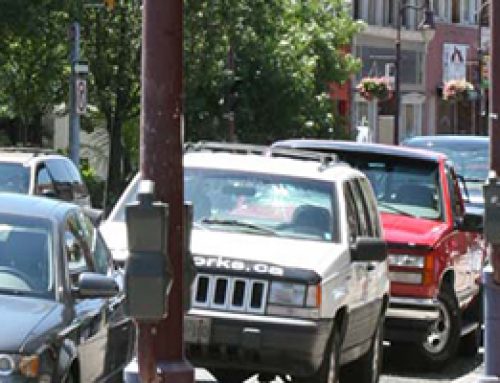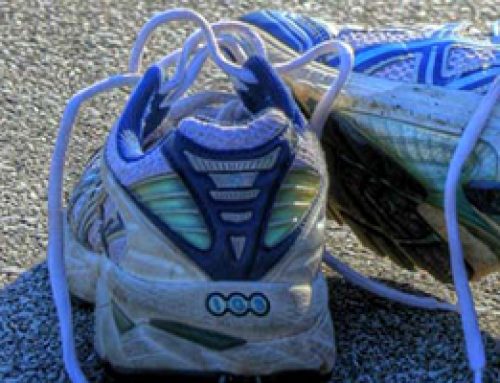Opportunities abound to enjoy recreation and leisure in facilities, natural areas, parks, and on trails within the Niagara region.
Recreation Facilities in Local Municipalities in the Niagara Region
The annual Financial Information Return (FIR) is available for viewing/downloading form the Ontario Ministry of Municipal Affairs and Housing (MAH) website. The FIR is the main data collection tool used by the MAH to collect financial and statistical information on Municipalities, and is a standard document comprised of a number of Schedules which are updated each year to comply with current legislation and reporting requirements.
The FIR information shows that in total in 2013* for all 12 of the local municipalities in Niagara, there are:
- 322 Kilometers of trails
- 1,812 Hectares of open space
- 1,199,444 square meters of outdoor receration facility space
- 177,177 square meters of indoor recreation facilities
There were a total of 3,984,374 participant hours for recreation programs, with the following breakdown by local municipality:
|
Local municipality |
Participant hours for recreation programs 2013* |
% of total participant hours |
Total Population |
% of total population for the region |
|
St. Catharines |
1,214,260.00 |
30.5% |
131,400 |
30.7% |
|
Niagara Falls |
324,495.00 |
8.1% |
82,997 |
19.4% |
|
Welland |
1,284,015.00 |
32.2% |
50,631 |
11.8% |
|
Niagara-on-the-Lake |
8,036.00 |
0.2% |
15,400 |
3.6% |
|
Thorold |
6,740.00 |
0.2% |
17,931 |
4.2% |
|
Fort Erie |
131,745.00 |
3.3% |
29,960 |
7.0% |
|
Lincoln |
540,451.00 |
13.6% |
20,228 |
4.7% |
|
Pelham |
142,515.00 |
3.6% |
15,987 |
3.7% |
|
Wainfleet |
blank |
blank |
6,040 |
1.4% |
|
West Lincoln |
17,142.00 |
0.4% |
13,837 |
3.2% |
|
Port Colborne (*2012 figures) |
3,076.00 |
0.1% |
18,003 |
4.2% |
|
Grimsby (*2012 figures) |
311,899.00 |
7.8% |
25,325 |
5.9% |
|
TOTAL |
3,984,374.00 |
100% |
427,739 |
100.0% |
Source: Ontario Ministry of Municipal Affairs and Housing (MAH) Financial Information Reports (FIR2013) files (*includes 2012 figures for Port Colborne and Grimsby)
Retrieved From: http://csconramp.mah.gov.on.ca/fir/ViewFIR2013.htm#2600
Note: the following information about Active Transportation and Cycling in Niagara is also included in the Transportation and Mobility Sector of this report.
Active Transportation and Cycling in Niagara
Active Transportation is a topic of increasing importance in Niagara.
According to the Public Health Agency of Canada, Active Transportation refers to any form of human-powered transportation – walking, cycling, using a wheelchair, in-line skating or skateboarding. There are many ways to engage in active transportation, whether it is walking to the bus stop, or cycling to school/work.
Active transportation includes many active modes and methods of travel such as:
- walking/jogging/running;
- cycling;
- in-line skating;
- skateboarding;
- non-mechanized wheelchairing; and
- snowshoeing/skiing.
There are numerous benefits from active transportation:
- Health – Active transportation provides an opportunity to be physically active on a regular basis.
- Social – Active transportation is accessible to Canadians and increases social interactions.
- Transportation – Active transportation reduces road congestion.
- Environmental – Active transportation is environmentally-friendly and can contribute to reductions in greenhouse gas emissions.
- Economic – Active transportation saves money on gas and parking.
Source: Public Health Agency of Canada
Retrieved From: http://www.phac-aspc.gc.ca/hp-ps/hl-mvs/pa-ap/at-ta-eng.php
Cycling Routes and Bike Friendly Planning
Cycling for pleasure and fitness is growing in popularity; so is cycling tourism. The presence of official multi-use trails in Niagara, cycle-friendly municipal planning and growth in cycling tourism are all indications of the impact active transportation is having on Niagara.
According to Niagara Region’s comprehensive bike map of the region, there are about 282.2km of official trails in Niagara. These trails are mostly off of the road, away from street traffic, and connect all the municipalities together.
Source: Niagara Region
Retrieved From: http://www.niagaraknowledgeexchange.com/resources-publications/niagara-region-bicycling-map/
Bike Friendly Municipalities
Bike Friendly Municipalities are designated by the Share the Road Cycling Coalition. Of Ontario’s 444 municipalities, 24 have received this status. Of those 24, Niagara Region has 5 local municipalities that have designations:
- Pelham – Silver
- Grimsby – Bronze
- Thorold – Bronze
- Welland – Bronze
- St. Catharines – Bronze
Cycling Tourism is growing in Niagara, according to Venture Niagara. A May, 2014 presentation cites 2010 research, Transportation Options. Economic Impact of Cycle Tourism: Niagara Region and Greenbelt Areas, Summer 2010 cites significant economic impact of visitors participating in cycling activities in Ontario.
#CycleON, Ontario’s Cycling Strategy is investing $25 million in bike infrastructure funding to help municipalities expand cycling routes and fund pilot programs including building cycling infrastructure on provincial highways and bridges.
Source: Venture Niagara, Niagara Cycling Tourism Slide Presentation, May 5, 2014
Retrieved From: http://www.niagaraknowledgeexchange.com/resources-publications/niagara-cycling-tourism/
Cycling Tourism in Niagara Parks is a 2013 policy brief prepared for the Niagara Parks Commission that outlines the importance for Niagara of opportunities around being a “Cycle Friendly” community. In particular, it cites:
Cyclists spend more money per occasion than those individuals arriving by vehicle.
- In 2010, some 84,000 cycle tourists visited Niagara Region, ranked third in Ontario behind Toronto (223,000 cycle tourists) and Ottawa (110,000 cycle tourists). In all, cycle tourism contributed $104 million to the Ontario economy in 2010 (Transportation Options 2012).
- Cycle tourists staying one or more nights in Niagara spend an average $148, excluding accommodation (Transportation Options 2012) while $108 is the average spent by all Niagara cyclists when including day-trippers (Transportation Options 2010)
- Bicycle tourists look for activities and sites of interest to visit along any trails or paths.
- Bicycling infrastructure is relatively inexpensive. Example, the cost of one bicycle parking spot is approximately five per cent the cost of building one car parking spot.
- Becoming bike-friendly can attract new customers as businesses that have pursued this have found up to one-third of their customers are now cyclists.
Source: Niagara Community Observatory at Brock University, Policy Brief #17, November 2013, Cycle Tourism in Niagara Parks
Retrieved From: http://www.niagaraknowledgeexchange.com/transportation-mobility/cycle-tourism-in-niagara-parks/
Percent of Niagara Population Who Report Being Physically Active, by Age Category (older adults aged 65 and older, versus 12-64 years of age), 2011
In Niagara in 2011, 37.2 per cent of seniors (age 65 and older) reported being physically active, compared to 58.2 per cent of the general population aged 12 to 64 years of age. These statistics are reported in the 2013 Federation of Canadian Municipalities (FCM) report, “Canada’s Aging Population: The Municipal Role in Canada’s Demographic Shift”.
The following table is from the section of the report that focuses on transportation accessibility and recreation as important components of active aging. It is based on rates of moderate physical activity among seniors, from the 2011 Canadian Community Health Survey. It compares the proportion of seniors who reported being physically active with the proportion of adults aged 12 to 64 who report being physically active, by FCM QOLRS (Quality of Life Reporting System) community (includes Niagara Region).
On average, seniors in these QOLRS communities are less likely than the rest of the population to engage in regular physical activity (43.9 per cent of seniors, vs. 55.5 per cent of the general population). In Niagara, these numbers are 37.2 percent of seniors vs. 58.2 per cent of the general population.

Source: Federation of Canadian Municipalities
Retrieved From: http://www.fcm.ca/Documents/reports/FCM/canadas_aging_population_the_municipal_role_in_Canadas_demographic_shift_en.pdf
Sparking Life Niagara Program Piloted at Two Niagara High Schools During 2011-2012 School Year
The Canadian Society for Exercise Physiology (CSEP) has put forth physical activity guidelines for youth aged 12-17 years of age. These guidelines state that youth should get at least 60 minutes of moderate to vigorous physical activity daily (CSEP, 2012). The 2007-2009 Canadian Health Measures Survey (CHMS) shows that only 7% of Canadian children and youth are meeting the recommended guidelines of at least six days a week (Colley et al., 2011). Moreover, the Public Health Agency of Canada and the Canadian Institute for Health Information (PHAC & CIHI, 2011) state that the prevalence of obesity has nearly tripled for the 12 to 17 year old group in the last few decades.
The Sparking Life Niagara (SLN) program was piloted at two high schools in the Niagara Region during the 2011 to 2012 academic year. Students participating in the program performed aerobic activity for a minimum of 20 minutes between 65 to 85% of their maximum heart rate on school days.
This program was based on research conducted by Dr. Ratey, a Harvard University professor, who conveys the ability of physical activity to improve academic performance, mood, concentration, and learning. Particularly for youth and school-aged children, noted benefits of physical activity include the prevention of obesity, high blood pressure and type II diabetes, improved musculoskeletal, cardiovascular fitness and plasma lipids, and improved mental health including self-concept, anxiety and depression.
The evaluation focused on three main overarching outcomes:
- academic achievement,
- mental/emotional well-being, and
- physical health and fitness measurements.
Academic Achievement:
- Improved math skills as measured through standardized testing (KTEA-II)
- Improved reading comprehension skills as measured through standardized testing (OCA, B CIBS-II)
- Average number of credits accumulated per semester increased
- The majority of students (66.7%, N=28) responded that the program helped them pay attention in class while only 9 said that it did not
- Increased interest in school including motivation and enthusiasm to attend class, improved grades, homework or credit completion and greater efforts to concentrate and pay attention in class as noted by parents/guardians (48.6%, N=18)
Mental/Emotional Well-Being:
- 65.9% of students (N=27) who responded noticed an overall positive change in mood from participating in the program
- Those who did notice a change mentioned that they felt happier, more energetic, were more confident and “in a better mood”
- Improvement in mood and behaviour including anxiety, happiness, relaxation, concentration, confidence, attitudes, and anger as noted by parents (29.7%, N=11)
Physical Health and Fitness:
- Improved aerobic fitness as measured by the Beep Test
- No change in physical measurements including BMI, resting heart rate, blood pressure, and waist circumference
- Increased physical activity levels in 70.7% of students (N=29)
Source: Niagara Region Public Health
Retrieved From: http://www.niagararegion.ca/living/health_wellness/healthylifestyles/spark-life/PDF/FinalEvaluationReport.pdf
Healthy Kids Community Challenge in Niagara
Obesity prevention and levels of physical activity among young people in Niagara is a concern cited in the Health and Wellness Sector of this report.
In 2014, Niagara was selected by the Ontario Ministry of Health and Long Term Care as one of 45 communities to participate in The Healthy Kids Community Challenge. This 3-year initiative will focus on delivering local programs and activities that support children and youth to be more active and healthy to help prevent and combat obesity.
The Healthy Kids Community Challenge is based on the EPODE (Ensemble Prévenons l’Obesité des Enfants – Together Let’s Prevent Childhood Obesity) methodology. EPODE began in France and has been recognized by the World Health Organization as an international best practice in obesity prevention.
Source: Ontario Ministry of Health and Long-Term Care
Retrieved From: http://www.health.gov.on.ca/en/public/programs/healthykids/
PALS program – Playground Activity Leaders in Schools (PALS) is a program that trains student leaders in grades 4 to 7 to offer playground games and activities for all students during scheduled breaks. Objectives of the program are to:
- Increase physical activity;
- Provide a leadership opportunity for students; and
- Decrease conflict and reduce the incidence of playground bullying.
Source: Niagara Region Public Health
Retrieved From: https://www.niagararegion.ca/health/schools/playground-activity-leaders.aspx
Note: the PALS program is also highlighted in the Belonging, Volunteering, Giving, Leadership Sector of the Living in Niagara-2014 report.
Concussions and Minor Sports in Niagara
Concussions are particularly common among children and youth involved in organized sports. According to Niagara Region Public Health (NRPH), greater public awareness of the seriousness of concussions in young athletes/students, as outlined by the Ontario Ministry of Education, will demand more accountability from minor sport organizations.
In September, 2014, NRPH launched a Concussions and Minor Sports webpage as part of a strategy to engage with minor sport organizations across Niagara. Leading up to this, consultations were held with representatives from various minor hockey associations and minor soccer clubs across Niagara to assess needs, identify current practices, share resources, and ‘pilot’ NRPH services that address concussion awareness, education, and policy development.
NRPH cites the following sports played by children and youth where they see the highest rates of concussion/brain injury:
- Ice hockey
- Soccer
- Football
- Basketball
- Baseball
- Rugby
- Lacrosse
- Ringette
They advise parents with children participating in minor sports within Niagara should be asking questions of their child’s sports league or club – to see how they are addressing the issue of concussions and the proper management of them in young athletes. More information about concussions is available on the Ontario Government – Concussions Web Portal.
Source: Niagara Region Public Health
Retrieved From: http://www.niagaraknowledgeexchange.com/community-blog/concussions-and-minor-sports-in-niagara/
Organizations in Niagara Providing Financial Support for Children and Families to Participate in Recreation and Sports Activities
Increasingly, for social profit and charitable organizations in Niagara are supporting initiatives that connect research showing that participation in sports and recreational activities promotes healthy child development, self esteem and is linked to increased academic and social performance. Supporting such programs is an investment in our communtity’s socio-economic future. Across Niagara there are a number of financial assistance programs to assist families that cannot afford to enrol their children in recreation and sports activities.
The JumpStart Program sponsored by Canadian Tire Jumpstart Charities has 111 Chapters in Ontario. In 2013, the program distributed $5,352,819 and helped 52,756 children to participate in sports and physical activity. The program is built on the philosophy that when children have the opportunity for such participation, they are engaged and it helps to promote lifelong fitness. It also teaches skills and attitudes, such as self-discipline, determination and teamwork that will contribute to success in every aspect of a child’s life. Participation connects kids to their communities and provides a foundation for rewarding relationships and lasting friendships.
Agencies that administer the Jump Start Program in Niagara include: Port Cares, Project Share, Community Care St. Catharines and Thorold, Grimsby Benevolent Fund, Big Brothers Big Sisters of South Niagara and Community Care of West Niagara.
Source: Canadian Tire Jumpstart Charities
Retrieved From: http://s7d5.scene7.com/is/content/CanadianTire/CTJS_AnnualReport2013_enpdf
Niagara’s ProKids program supports the participation of eligible children and youth in the sport, recreational or cultural activity of their choice. The program is managed by Niagara Region, in collaboration with the YMCA of Niagara and a Community Advisory Council. More than 200 businesses and agencies provide supports to the ProKids program to ensure that children and youth are able to take part. The YMCA of Niagara administers the Prokids Program for the Region.
Source: Niagara Region
Retrieved From: http://www.niagararegion.ca/living/childcare/financial-assistance/recreation-culture-programs.aspx
The Bob Gale Recreation Fund provides financial assistance for individuals of all ages from Niagara Falls who, due to financial constraints, are unable to participate in recreation and leisure programs.
Source: Bob Gale Recreation Fund
Retrieved From: http://www.bobgalerecreationfund.com
KidSport of Niagara Region is a regional chapter of KidSport Ontario, a nationally registered not-for-profit sports organization. Funds are raised to give grants that put children into sports activities. Eligible families can apply by completing an online KidSport Grant Application. Since its inception, KidSport Niagara has issued about 350 grants totalling over $90,000 to assist children across the region.
Source: KidSport Niagara
Retrieved From: http://kidsportniagara.ca/







